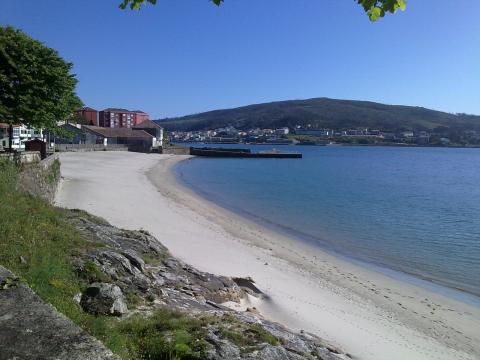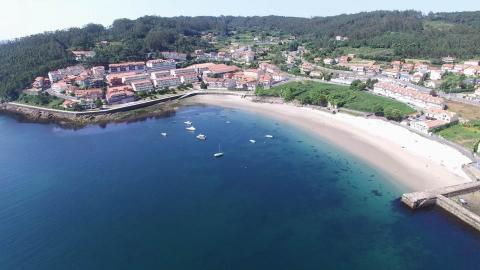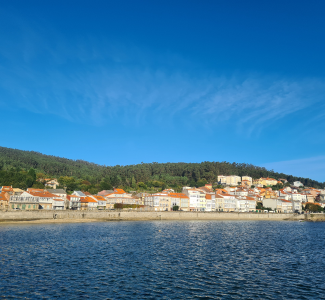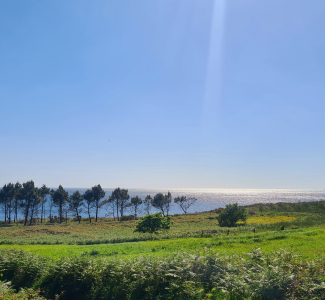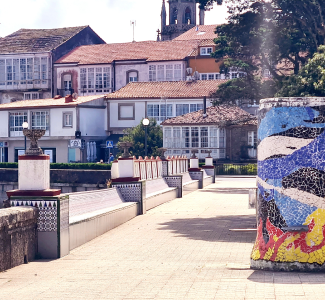What to see in Corcubión
Corcubion, land of calm and bravery
Cultural Heritage
Cultural Heritage
SHIPWRECKS
Underwater heritage
The numerous shipwrecks that have occurred in Costa da Morte over time are well known, some of them due to storms, others due to breakdowns. The truth is that there are many shipwrecks located at the bottom of our coasts.
In the Corcubión estuary there were also numerous shipwrecks. The area of the Carromeiro Chico, known as "The Cemetery of the Greek Ships" because of the various sinkings of Greek ships, such as the Manoussis (23 May 1930), the Constantinos Pateras (10 May 1922), Maria Kastanou (May 1930) or Mount Parnes (14 February 1935), is worth mentioning. In addition to these Greek ships, other nationalities boats were shipwrecked in this area, including the Russian Marie (28 January 1910), the Norwegian As Langford (23 October 1907) and the English Rosalie (7 October 1905) and Albion (2 May 1908).
Among the ships that have sunk in the waters around Corcubión, the following are worth mentioning:
- The galleon San Jerónimo, belonging to the Padilla’s Navy, sank at Punta do Diñeiro (between Cape Cee and Cape Nasa), in 1595.
- The English sloop Abeana: it arrived at the end of January 1821 and sank on the 8th of February when it was trying to get back into the sea off the coast of Redonda.
- The French sloop Societé de Saint Malo sank on the 23rd of September 1822 in the coast of Redonda. In this incident the captain died, whose body was found on A Mariña’s beach, where he was buried.
- The Arrogant Asturian brigantine sank on the 7th of April 1856 in the vicinity of Punta de Quenxe. Its crew was rescued in one of the salting factories on the beach, owned by Don Agustín Sagristá.
- The Portuguese large sailing ship Rio Ave, sunk between A Mariña (passing Cape Cee) and Cape Nasa on the 4th of January 1857.
- The Spanish sailboat, registered in Villajoyosa (Alicante – Comunidad Valenciana), called Joven Ignacio, sank on the 8th November 1871. This boat arrived with fire in its load of coal and to try to save it it was beached of Corcubión; but as the fire did not extinguished the solution was to make some holes in the hull so that the water could enter, so finally it was submerged.
- The Spanish corvette Sisarga, registered in A Coruña, was beached at Punta de Quenxe after arriving into the estuary with a breakdown. In the early hours of the 4th of February 1872 it was again afloat, but ended up sinking near the new quay.
- The English steamer Derwentwater sank on the 14th of November 1890 on Lobeira Island.
- The brigantine-schooner María Joaquina, with a Spanish flag and registered in Vigo (Galicia), sank at the beginning of January 1895 on Lobeira Island.
- The steamer Nuestra Señora del Carmen, lost on the 3rd of November 1901 in an area near Cape Cee, entered the estuary to refuel coal and, after reaching de bottom, a leak caused, finally, its sinking.
- The Greek steamer Polynnia sank on Lobeira Island on the 11th of June 1904.
- The schooner Maria Segunda, registered in Muros, was attacked by the Norwegian steamer Reim when both were leaving the estuary near the Carromeiro Grande on the 15th of July 1910. There were no casualties, the steamer Reim did not help the crew who managed to get to safety in a lifeboat on board.
- The English steamer Cisneros entered Corcubión on the 4th of April 1925 with a wildfire on board. It was stranded near La Seca’s beach, in Cee, just in front of Corcubión. Due to the effect of the fire, the steamer became unusable for navigation, so it was finally scrapped on Corcubión’s beach, between the stairs near the port and the filling of estuary (where the long tile bench is).
- The English steamer County of Cardigan entered Corcubión with a leak and the captain, in an attempt to save it, ran aground it near Cape Cee on the 20th of May 1925. It had a 500 tons load of corn from Braila (Romania). In the following days, a storm caused serious damage to the hull of the ship, making it impossible to save it. Even so, part of the corn load could be recovered.
- The Sorrento pontoon, an old Italian corvette used as a floating coal deposit, sank in January 1927 due to a leak, being loaded with coal, near Punta de Quenxe. The remains are still in the same place where it sank.






